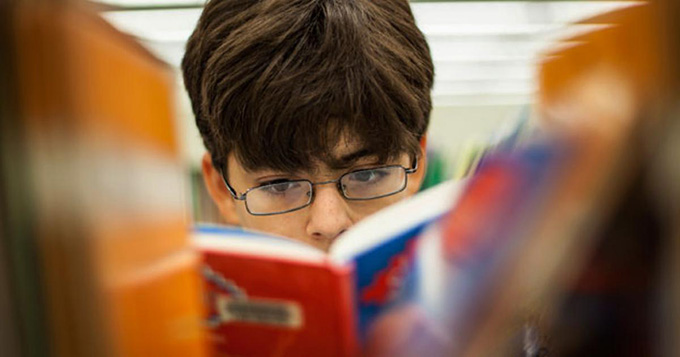
The Gipuzkoan poet Gabriel Celaya (1911-1991), one of the greatest exponents of postwar Spanish poetry, has a poem entitled Poetry is a weapon loaded with the future , in which he immerses himself in creative work as a means of exchange with society, to the point of erasing their individual authorship to collectivize the voice.
However, currently the report prepared for the Federation of Publishers Guilds of Spain (FGEE) issued in February 2021 with the main results of the reading and buying habits of books in Spain (2020) gives us reliable data about the surprisingly low numbers of poetry readers in Spain, with only 1.2% of the population .
This leads us to ask ourselves questions such as: Why don’t young people, considered the present, but also the future, not read poetry? What leads you to despise a literary genre as varied as this one? Who reads more poetry, boys or girls? What could we do to increase the number of poetry adherents in Secondary Education? These are just some of the questions that arise when addressing an issue of such educational importance as this and to which we will respond throughout this analysis.
As teacher Raquel Zaldívar points out in her article The attitudes of adolescents towards poetry, its didactics and emotional education in ESO , “the secondary school reader is conceived mainly as a reader of narrative”, which is why a large number of Students refuse poetry by not understanding it, not finding a reason for being in it, leading to situations of boredom.
Boredom usually comes from a lack of understanding of the content of the poem. So this, together with the lack of recognition, of identification that many young people feel when reading a lyrical composition by Garcilaso de la Vega (1503-1536) or Emilia Pardo Bazán (1851-1921) leads to the absolute rejection of the poetic genre. .
In this sense, it is not surprising that a large part of ESO students repel poetry if they use the same mechanisms to interpret it that they use with narrative. Both genders are not perceived in the same way because each one has different meanings. That is to say, the look with which we perceive prose is not equivalent to a text written in verse, and this is the main cause of the lack of understanding that appears when we work poetry with high school students.
But can we do something to avoid it? Is there a specific formula to achieve those poetic “lovers” that García Lorca spoke of ?
A new era for poetry among teenagers
Not all teachers have worked what Professor John Keating in The Club of Dead Poets (1989), who, in an attempt to get away from the more traditional teaching, begins his first day of class by reciting in the hallway Oh! , Captain, my Captain! by Walt Whitman (1865).
However, currently we can encourage students to acquire poetry using ICT. Fortunately, we have the presence of applications such as Poetspad , Poetics , Bot or not , Poets corner , IP Poetry , Poetika , Famous Poetry or Blackout Bard: Create Blackout Poetry that turn the experience of reading a poem into a motivating practice of enormous attraction, as well as great multidisciplinary potential, since teachers can link the study of poetry with that of other areas such as music.
In the same way, there are tools, such as Métrica Freestyle , that allow students to generate their own texts, developing the management of feelings, studying, as the expert Isabel Gallardo points out , “the state of mind of the lyrical self and the response, often emotional , of the readers ”.
Do they or do they read more?
The results of the report by the editors’ union mentioned above indicate that women read more than men, 77.8% compared to 68.7%. However, we do not have rigorous reports or statistics that guarantee the accurate figures of adolescent poetry readers compared to young readers of it.
However, the current data lead us to think that they also exceed the numbers in the habit of poetic reading and in this, perhaps, the thematic content of poetry has a lot to do with it. That is, poetry requires artistic sensitivity, as well as the ability to investigate the deepest inner world of the human being, exploring the affective consciousness of each one, but also encourages the positive effects of emotional competence such as “subjective well-being or resilience ” , Of which Bisquerra Alzina and Pérez Escoda speak in their study on emotional competences.
Therefore, when talking about poetry, it is not easy to give the reasons that motivate some and others to read it, the only thing that really matters in this path of emotional and individual experience is to normalize the expression of emotions, to transmit naturalness at the time of work on them in the classroom, making use of digital resources to bring this art closer to the students because, taking up the words of the author with whom we opened this text: poetry “ is not a beautiful product. It is not a perfect fruit. / It is something like the air that we all breathe and it is the song that spaces everything inside us ”.
Author Bio: Maria de Gracia Rodriguez Fernandez is Professor in the Primary Education Degree and in the Master’s Degree in Spanish as a Foreign Language and Bilingual Education at the International University of Valencia
